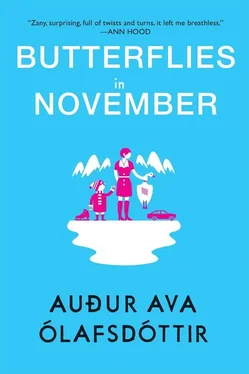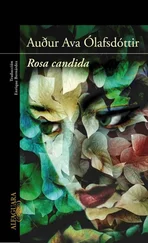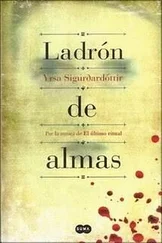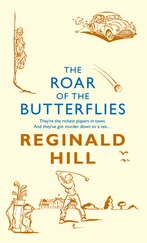Goose broth, ½ litre of water, salt, pepper, 1 tablespoon of redcurrant jelly, cream. Pour the goose broth into a dripping-pan that will siphon the liquefied fat. Season the sauce according to taste. Since the sauce has to be thick enough to conceal the tread marks of the car tires left on the run-over bird, it is probably best to use old-fashioned flour to thicken it. Mix a tablespoon of flour with several tablespoons of water and blend it into the broth. Add one tablespoon of redcurrant jelly into the sauce, whip the cream and mix it with the rest before the sauce is presented. The sauce should be the last dish placed on the dining table adorned with candles. TEA AND BREAD WITH SMOKED SALMON
Tea and bread with smoked salmon is the ideal afternoon snack when someone pops in to see you on the way home from work, for example. Trout is also a perfectly acceptable alternative. Many types of trout can be used: lightly smoked, dung-smoked, birch-smoked, hot-smoked. Many trout breeders have started to do their own smoking at home and you can therefore choose fish from various parts of the country. To add variety, trim some cress over the smoked fish, since cress can be grown in soil or wet cotton on the kitchen window sill all year round. TEA
Tea can never be praised enough as an afternoon refreshment. All research indicates that green tea is the healthiest beverage one can drink. In some places in the Far East one can spend the whole day in tea houses, while a waiter wanders between guests with a pot of boiling water balanced on a bamboo shoot over his shoulder. People who have lived in Britain generally like to have cream biscuits with a yellow or pink filling with their afternoon tea. In Iceland one can use Frón kremkex , which have a white cream inside. For anyone suffering from insomnia, herbal tea with two to three slices of toast would be preferable.
Green tea: 2 tablespoons of tea leaves, 1 litre of boiled water. The teapot is heated by rinsing its interior with boiling water. Place the tea leaves in the pot and pour boiling water over them. Steep for 4 minutes. Pour into cups through a tea-strainer.
Herbal tea: August is the best month for gathering herbs. Pick thyme, white dryas, cinquefoil, mint leaves, yarrow and lady’s mantle. Dry the herbs. It is a good idea to pre-dry them inside a clean pillow case before placing them on a tray to fully dry them. Boil 1 litre of water in a pot, remove it from the heat and put a fistful of the dried herbs into it (2 tablespoons if the herbs have been finely chopped). Close the lid and allow to brew for 15 minutes. Herbal tea can be reheated several times but not reboiled. It is advisable to read up on the healing properties of the various herbs (e.g. their effect on sore throats, stomach problems and ailing hearts) and experiment with dosages. SPINACH LASAGNE
Lasagne is generally on the table on Wednesdays. The recipes on the Barilla packet are fairly easy to follow in themselves. Finding the right size of baking pan can be tricky, though. The following is a vegetarian alternative to the traditional minced meat recipe. Pour the oil from a packet of feta cheese into the pan. Fill the pan with spinach and maybe onion and mushrooms, if there happen to be some in the fridge and it tickles your fancy. Cover abundantly with cream and allow to simmer until the spinach leaves have softened. Arrange a base layer of pasta sheets at the bottom of a baking pan and then pour the spinach mix over it, followed by bits of feta cheese. Then repeat this, layer after layer, according to the size of the baking pan and the number of people eating. Finally, sprinkle grated mozzarella over the top layer. Bake in the oven for 30 minutes. Eat with good bread and green salad. This is a very nourishing and relatively simple dish which most people can do, and can be just as appealing to the young as the old. WILD GOOSE WITH TRIMMINGS AND A RICH, THICK WILD GAME SAUCE
Wild goose can be cooked in a variety of ways with a vast choice of trimmings. The chef cannot always choose the size of the goose, as the case of the run-over goose clearly demonstrates, but ideally the goose should be neither too big nor too fat. It should preferably be rather young, and young geese are generally recognizable from the reddish-pink colour of their feet and beaks, as well as the softness of their bills. The average goose weighs between three and six kilos and feeds between five and ten people. Since part of the goose’s fat melts away during cooking, it diminishes by a corresponding volume. This recipe is intended for one man and one woman and one can therefore expect ample leftovers. It is best to leave the goose hanging outside for several days after it has been shot or killed by other means. Collect the goose from your balcony and pluck it without tearing its flesh. Once the goose’s feathers have been removed, the beige colour of its skin is revealed with an interesting argyle pattern. It is best to skim over the bird with a Primus blowtorch, e.g. out in the garage where the primus is kept, or alternatively by using the flame of a candle. Grab one of the goose’s legs and wings, hold it at a comfortable distance from the flame and then swing it to and fro. When you have finished torching it, cut its neck, wings and legs. Then cut into the bird just above its sternum to scrape out the gizzard and remove the gall, heart and liver. Take the goose’s heart, slice it with a sharp knife, rinse out the blood and put it aside for another occasion. The heart can be both roasted with the bird to sharpen the taste of its juice or can be used as part of the stuffing. Then rinse the goose in cold water and wipe it. Once this has been done, you have to decide how to cook it:
1. Icelandic wild goose with apples and prunes roasted in the old-fashioned way. Wild goose, salt, pepper, apples, prunes, parsley . Massage the washed goose and season it with salt and pepper, both inside and out, before placing it on the draining board and preparing the stuffing. The stuffing is made with apple wedges, soft, pitted prunes and chopped parsley. Shove the stuffing into the goose and close the opening with a skewer or by sewing it. Ensure you also close off other holes the stuffing could leak out of, such as the neck cavity. Then place the goose, breast side up, on a roasting pan and fry it for several minutes at high heat. Pour boiling water over the goose and carry on roasting it at a low temperature for 2–3 hours, depending on the bird’s age and size. The bird can be turned over while it is being roasted, although it is not necessary. It is customary during roasting to wet the bird with its juices at 15-minute intervals to prevent it from shrivelling or burning. The goose should be eaten in good company and with baked potato wedges, home-cooked red cabbage, green peas, carrot purée, apple and walnut salad with crème fraîche, a rich, thick sauce and redcurrant jelly.
2. Boiled goose with potatoes and onion stuffing á la Irish. One goose, salt, pepper. Broth: neck, heart and gizzard of goose, a small onion, a carrot and fresh thyme, parsley, a little celery, 6–7 peppercorns, water. Stuffing: 10 medium-sized potatoes, 7 onions, 6 apples, 50 grams of butter, one tablespoon of chopped parsley, one tablespoon of chopped lemongrass, salt and pepper. Pluck and torch the goose in the same way as Icelandic wild goose. In Ireland there is an old tradition of hanging onto the feathered wings to dust the dark corners of the house. The smaller feathers went into pillows. Start by preparing the stuffing. Boil potatoes in salted water, and then peel and mash them. Chop the onion and brown it in a pan or pot for 5 minutes, without burning it. Add the sliced apples to the onion in the pan and cook them until they soften. Regularly stir the onion and apple mix. Add the mashed potatoes, parsley, lemongrass, salt and pepper and blend them well together. Allow the stuffing to cool before filling the goose. Clean out the innards of the Irish goose in the same way as the Icelandic one. To make the broth, throw the neck, heart and gizzard into a pot with a small onion, one carrot, thyme, parsley, celery and the peppercorns. Drown them in cold water and allow them to simmer at a low heat for 2 hours. The wings can be added if one wants. Season the washed and dried goose with salt and pepper, both inside and out, and insert the stuffing. Rub sea salt into breast exterior. Place the goose in a big roasting pot, slip it into the oven, add water to the pot, place a lid over it and boil at a moderate temperature for 2–3 hours or for as long as it takes to remove all traces of the accident. Lift the lid off the pot 3–4 times during the boiling and spoon off the fat and juice and keep in a jar for another occasion. The fat can be kept for a long time in a jar in the fridge and can be put to a variety of uses, e.g. to pour over potatoes in the oven. In the olden days it was considered beneficial to rub the goose fat into the chests of people with respiratory problems. Goose fat was also used to polish kitchen utensils in Irish homes as well as leather garments. Add the potatoes to the goose and allow them to cook with it for an hour. For the last 30 minutes remove the lid from the pot, and turn up the heat to brown the goose. Meanwhile, make the sauce. Filter the broth, add the cooking juices and fat from the goose, taste and season (dilute with water if the broth is too strong) and bring to boiling point again. Thicken the sauce according to taste. Eat the goose with the stuffing, baked potatoes, apple mousse and sauce. While the goose is cooking, use the opportunity to take a stroll around the cemetery. SLICING ONIONS
Читать дальше












